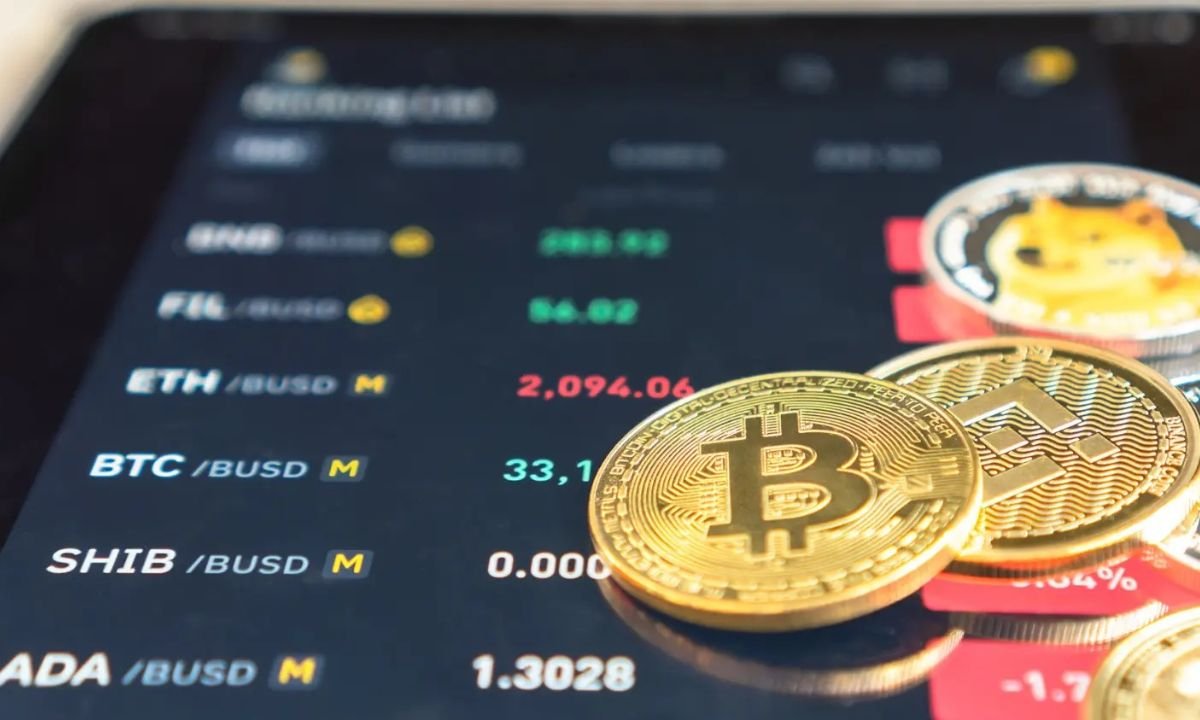Cryptocurrency scams have skyrocketed by a staggering 500% since the end of the pandemic. Unfortunately, learning how to recover stolen cryptocurrency has become an essential skill for investors in today’s digital landscape. In 2023 alone, crypto scammers seized an astounding $14 billion from unsuspecting victims, while more than 100,000 Americans lost over $1 billion to crypto-related fraud that same year.
The increasing popularity of cryptocurrencies has undoubtedly attracted numerous scammers, making crypto scams increasingly difficult to spot. Furthermore, the problem shows no signs of slowing down – in April 2024 alone, criminals stole crypto worth $173 million. However, cryptocurrency scam recovery is possible with the right approach and resources.
In this comprehensive guide, we’ll walk through the essential steps victims should take after discovering they’ve been scammed. From assessing the damage and reporting to authorities to using specialized tools and strengthening security, we’ll provide actionable strategies to help recover scammed cryptocurrency and prevent future losses.
How to Recover Stolen Cryptocurrencies
- Following a cryptocurrency theft, victims should immediately:
- Stop sending any additional funds to suspected criminals
- Document all relevant details including transaction IDs, wallet addresses, and communications
- Report the incident to the Police and file a report at official channels
- Engage certified recovery services like CryoGuards Recovery Service instead of responding to unsolicited recovery offers
Lost crypto? Contact the trusted experts at CryoGuards Recovery Service today to start your legitimate recovery process: https://cryoguards.com/contact/— your digital assets may still be within reach!
Victim Discovers Crypto Scam and Assesses the Damage
Discovering you’ve been scammed can be a devastating realization. The FBI’s 2023 Cryptocurrency Fraud Report reveals a staggering $5.60 billion lost to crypto-related scams, marking a 45% increase from the previous year. Consequently, victims must take immediate action to assess their situation and begin the recovery process.
Gather transaction records and wallet addresses
Immediately after discovering the scam, documenting all transaction details becomes crucial for any recovery effort. Essential information includes:
- Cryptocurrency addresses (wallet IDs)
- Amount and type of cryptocurrency transferred
- Date and time of each transaction
- Transaction IDs (hash numbers)
- Screenshots of all interactions with the platform
Additionally, secure any remaining accounts by changing passwords and enabling two-factor authentication to prevent further losses.
Create a timeline of scam interactions
Reconstructing the entire scam helps both in recovery efforts and reporting to authorities. Document precisely:
- How and where you first encountered the scammer
- All communications including emails, texts, and associated identifiers
- Website addresses or applications the scammer instructed you to use
- Any two-factor authentication codes or one-time passcodes shared
- Names of cryptocurrency exchanges used to send or receive funds
One victim explained their documentation process: “I started taking screenshots. I have 872 screenshots because I’m research oriented… I was able to track everything”. This meticulous record-keeping proves invaluable when seeking assistance from law enforcement or fraud recovery specialists.
Victim Reports Scam to Authorities and Exchanges
After documenting all evidence, prompt reporting becomes vital for recovering stolen cryptocurrency. According to experts, timing matters significantly, as each day that passes may make recovery more challenging.
File a complaint with IC3 or local law enforcement
Initially, victims should submit a detailed report to the FBI’s Internet Crime Complaint Center(IC3) at ic3.gov. The IC3 focuses specifically on cyber-enabled crimes, including cryptocurrency fraud. When filing, include:
- Complete transaction details (addresses, amounts, cryptocurrency types)
- Transaction hashes and timestamps
- Communications with the scammer (emails, texts, phone numbers)
- Domain names and websites involved
- Two-factor authentication information
- Names of cryptocurrency exchanges used
- Timeline of the scam
Even if you lack all transaction information, experts recommend filing a report with whatever details you have available. For those uncomfortable with online reporting, especially seniors, the National Elder Fraud WhatsApp Hotline (+1 646-526-2035) can assist with filing IC3 complaints.
Notify the crypto exchange involved
Following your report to authorities, contact any cryptocurrency exchange platform where the transactions occurred. Most exchanges offer dedicated support channels for fraud reporting:
- Visit the exchange’s official website directly (never through links sent by others)
- Locate their “Support” or “Help” section
- Submit a detailed support ticket with all transaction information
- Look for specialized “Scam Reporting Forms” offered by some platforms
Some exchanges may freeze suspicious accounts upon receiving credible fraud reports, potentially halting further movement of stolen funds.
Reach out to consumer protection agencies
Moreover, submitting reports to multiple agencies increases the chances of recovery. Additional reporting options include:
- Federal Trade Commission (reportfraud.ftc.gov)
- Commodity Futures Trading Commission (CFTC.gov/complaint)
- Securities and Exchange Commission (sec.gov/tcr)
These reports help authorities build cases against scammers and may contribute to freezing assets or identifying patterns of fraud. Throughout this process, maintain copies of all complaints filed along with reference numbers for future follow-ups.
Victim Uses Tools and Experts to Recover Stolen Cryptocurrency
Once authorities have been notified, victims can turn to specialized services and technologies that may increase their chances of recovering stolen cryptocurrencies. Time remains a critical factor—within just 12 hours, stolen funds might travel through more than ten wallets or be cashed out through peer-to-peer desks.
Also read: Urgent Bitcoin Recovery Guide: What Every Victim Must Know in 2025
Hire a crypto fraud recovery specialist
CryoGuards Recovery Service combines technical expertise, legal support, and industry connections to significantly improve recovery chances. Law firms specializing in crypto recovery typically:
- Conduct thorough investigations of the scam and identify perpetrators
- Employ advanced blockchain forensics tools to trace stolen funds
- Work closely with law enforcement agencies and global partners
- Leverage knowledge of international laws to develop effective recovery strategies
Have you lost money to crypto investment? Here is where to hire a legitimate crypto recovery expert: https://cryoguards.com/contact/
Use blockchain analysis tools to trace funds
Blockchain analysis tools track cryptocurrency movements through public ledgers. Common tools include:
- Blockchain explorers like Etherscan and BscScan to view transactions and token balances
- Graphing engines such as Chainalysis Reactor and TRM Labs that visualize wallet relationships
- Cross-chain tracking tools that detect bridge use and mixer activity
Professional monitoring platforms like Chainalysis, CovaSecure, or HackersTent provide detailed insights into stolen cryptocurrency movements, potentially revealing when funds reach centralized exchanges where freezing becomes possible.
Understand the role of smart contracts in fund recovery
Smart contract recovery depends entirely on the contract’s design. Recovery is possible only if:
- The contract was specifically written to allow fund retrieval
- The contract’s creator is responsive and willing to assist
- The code contains built-in recovery mechanisms
Without these conditions, funds sent to “dead” contracts are typically lost forever. Nonetheless, consulting with experts who understand smart contract architecture remains worthwhile as some recovery scenarios exist.
Victim Learns from Experience and Strengthens Security
Beyond recovery efforts, victims naturally shift focus toward prevention of future crypto theft. Learning from experience becomes essential for long-term protection of digital assets.
Enable two-factor authentication and cold storage
Implementing two-factor authentication (2FA) creates a vital extra layer of security, making unauthorized access significantly more difficult. Although SMS-based 2FA exists, authentication apps like Google Authenticator or hardware tokens offer stronger protection against sophisticated attacks. Overall, biometric verification through fingerprints or facial recognition provides one of the most secure authentication methods.
For maximum protection, experts recommend cold storage wallets—physical hardware devices that store cryptocurrency offline. These wallets employ PIN codes and private cryptographic keys through “crypto bridging”. Prior to implementation, remember to safely store recovery or “seed phrases” using password managers.
Join crypto safety communities and forums
Participation in crypto forums helps victims identify scam patterns yet requires caution. Never share personal data or financial holdings in these communities. Before clicking links, carefully examine entire URLs for typos or suspicious characters.
Stay updated on scam tactics and prevention tips
Staying vigilant requires regular password changes and secure storage. Government resources like the DFPI Crypto Scam Tracker help monitor emerging threats. Finally, always exercise skepticism regarding unsolicited investment advice, particularly from online-only acquaintances.
Conclusion
Cryptocurrency scams undoubtedly present significant challenges for investors across the globe. The dramatic increase in fraud cases highlights the urgent need for awareness, education, and prompt action. Victims of these scams face both emotional trauma and financial devastation, though recovery remains possible through diligent effort and proper resources.
Time certainly emerges as the most critical factor when attempting to recover stolen cryptocurrency. Quick documentation of all transaction details, immediate reporting to authorities, and swift engagement with exchange platforms significantly improve recovery chances. Additionally, specialized services such as blockchain analysis tools, AI-powered detection systems, and professional recovery experts offer valuable assistance during this difficult process.
Prevention ultimately serves as the most effective defense against future attacks. Strong security practices like two-factor authentication, cold storage solutions, and regular password updates create substantial barriers against potential threats. Joining trusted crypto safety communities also provides essential knowledge about emerging scam tactics.
We must remember that cryptocurrency represents both remarkable opportunity and significant risk. Taking proactive security measures, exercising healthy skepticism toward investment opportunities, and staying informed about current threats will help safeguard your digital wealth. Despite the sophisticated methods employed by scammers, educated and cautious investors stand a much better chance of protecting their cryptocurrency investments against fraud attempts.
www.CryoGuards.com
Email: support@cryoguards.com
WhatsApp: +1-646-526-2035

